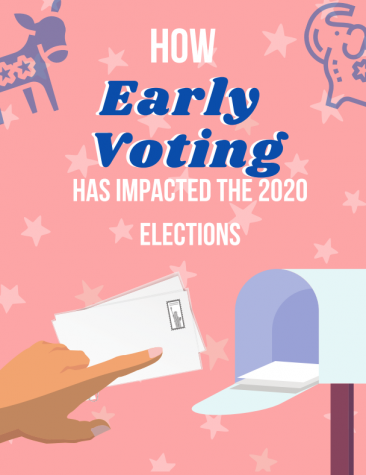2020 Vision: A History Lesson on the Electoral College
October 18, 2020
The Idea Behind the Electoral College
Delegates at the 1787 Constitutional Convention in Philadelphia, tasked with establishing a strong framework of government, decided upon a system known as the Electoral College to elect the President of the United States.
At the time of this convention, no country directly elected their president. Delegates debated tirelessly over different methods. Some felt that Congress should elect the president while others felt as though the people should. As a result, they created a compromise, now known as the Electoral College.
The framers believed this system would ensure that a qualified person was elected President and that no one could manipulate an election. Additionally, this system was set to give the voters in the less populated states more of a voice.
How the Electoral College Works
Every four years, in November, eligible American citizens head to the polls to vote for the president and vice president.
However, when citizens cast their ballots, they actually vote for a group of people called “electors.” In 48 states, these electors pledge to vote for a specific presidential candidate.
In Maine and Nebraska, the system works slightly differently: two electors pledge to vote for the winner of the state’s popular vote while a third elector votes based on the candidate that wins the most Congressional districts in their state.
With the Electoral College, each state has a certain number of committed electors based on their representation in Congress. Despite having no representation in Congress, Washington D.C. has three assigned electors. Electors represent one vote in the Electoral College.
The Electoral College makes up a total of 538 votes and a presidential candidate must win 270 of those to become president. If no candidate receives 270 votes, each member of the House of Representatives must cast a vote until one of the candidates has the majority.
Apart from the Electoral College votes, the election also provides the amount of popular votes which simply shows who received the most votes in total. Due to the Electoral College, the candidate that receives the most popular votes does not necessarily become President.
For example, in 2016, Democratic candidate Hillary Clinton won the popular vote by 2.9 million votes over Republican candidate Donald Trump. However, because Donald Trump won several key battleground and electoral states such as Ohio, Florida and Iowa, along with others, he received 304 electoral votes and became the president.
In this upcoming election, a number of key battleground states can once again decide the election. For example, polls to keep a close eye on include those in Florida, Arizona, Wisconsin and Pennsylvania.
If either former Vice President Joe Biden or current President Donald Trump gain the electoral votes from these states, they can almost be guaranteed over 270 of the Electoral College votes, and therefore, the election.













